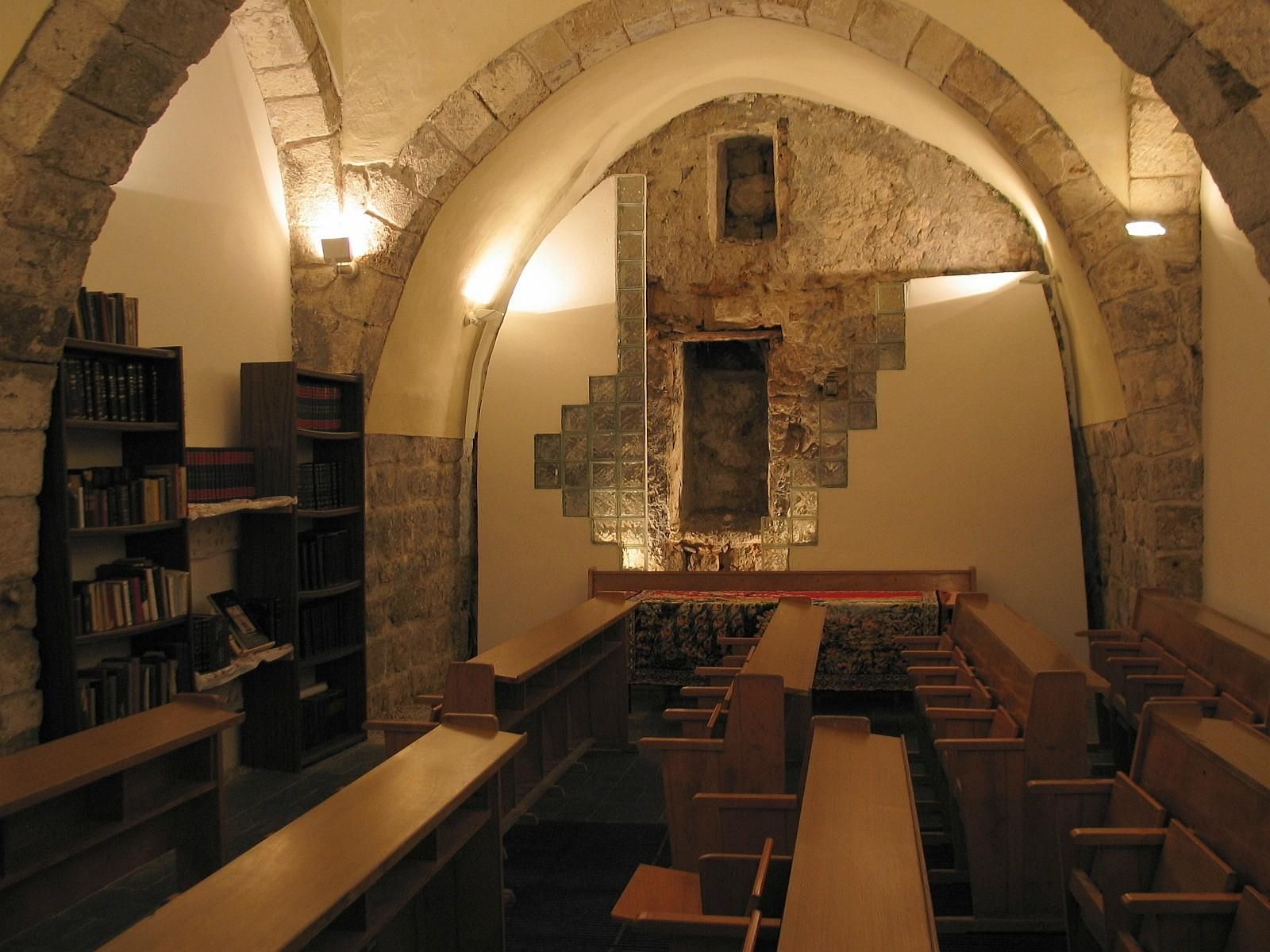Hebron’s Jewish community is the oldest in the world. It is the burial place of the founders of the Jewish nation and also the first capital of David’s kingdom before it was moved to Jerusalem. There is, in fact, a debate over whether it is holier than Jerusalem or in second place.
After the Roman Empire split into east and west in the 4th century and Israel came under the eastern Byzantine Empire, persecution of the Jews grew apace. But the succeeding Arab period (638–1100) was a relief for the Jews of Hebron, as for the other Jews of Palestine. The community was centered around the Cave of Machpelah which was maintained by a Jewish family. In the 8th century, the Caliph Omar gave permission to the Jews to build a synagogue near the Cave, as well as a cemetery. At the beginning of the 11th century, a Karaite community was formed. Crusader rule (1100–1260) brought a temporary end to the Jewish presence in Hebron. However, it was still the focal point of Jewish pilgrims, among whom were prominent personalities such as Maimonides (1166), Benjamin of Tudela (c. 1171), Pethahiah of Regensburg (1176), and Jacob ben Nethanel (second half of 12th century). By the beginning of the 13th century, the Jewish community was reestablished, but the tolerant Muslim attitude toward the Jews which had existed in pre-Crusader times did not continue with the return of the Muslims to Palestine. In 1266 it was decreed that the Jews were not allowed to enter the Cave of Machpelah, and this decree was strictly enforced until the Six Day War in 1967. A Christian traveler who visited Hebron in the first half of the 14th century reported that "Christian and Jewish people are regarded by them [the Muslims] as dogs, and they do not allow them to enter such a holy place". The fortunes of the Jews fluctuated since then but in 1540, the community was put on a firm foundation by Rabbi Malkiel Ashkenazi. Since the time of Rabbi Ashkenazi, Hebron’s Jews have lived, especially vis a vis its relations with the local Arab community, through periods alternating between peace and persecution. During the Arab pogroms of 1929, the ancient Jewish community of Hebron was either massacred or expelled. The assault was well planned and its aim was well defined: ethnic cleansing. The rioters did not spare women, children, or the aged; the British remained passive. Sixty-seven Jews were killed, 60 wounded, the community was destroyed, synagogues razed, and Torah scrolls burned.



In 1931, 35 families returned and the community slowly began to rebuild itself, but everything was again destroyed in the pogroms of 1936 and the British authorities evacuated the Jewish inhabitants. This ancient community thus ended and only one inhabitant remained there until 1947 when even he was driven out.
Jewish Quarter, Hebron, became a smoldering ruin under Arab occupation, 1948-1967
In 1948 Hebron was incorporated into the kingdom of Jordan. It was recaptured by the Israeli army in the Six-Day War of June 1967, and Jews again returned, but only for visits - the Israelis banned Jews from living there; the old Jewish quarter was found destroyed and the Jewish cemetery almost obliterated.
On the eve of Passover 1968 a group of Jews went to reestablish the community. They encountered opposition both from the local Arabs and from Israeli officials as their move had not been authorized. (The Israelis had no intention of authorizing the reestablishment of the community, ever.) The Jews had to fight for official recognition and the right to rebuild the community. In May 1968 they were moved from their temporary quarters to the area occupied by the military government which became the town of Kiryat Arba, thus acquiring the protection of the government but not the right to engage freely in economic activity. Through the influence of Hebron's mayor Muhammed Ali al-Ja’barī, the town remained relatively quiet under the Israeli military government, although in 1968 and 1969 attacks on Jews occurred repeatedly. There were several attacks on Jews who came to pray at the cave of Machpelah, as well as arguments about the right to pray there.
Not all the local Jews agreed to move to Kiryat Arba, and in 1981 they moved to the old Jewish quarter, which had been abandoned during the 1929 riots, taking possession of Bet Hadassah and the adjacent buildings. Thus, the Jewish community in Hebron proper was reborn. But due to constant Arab and government harassment, their numbers were forced to remain at some 500 today and the Israeli authorities strictly prohibit any expansion and development of the community.
(information, though at times not word-for-word, taken from the Encyclopedia Judaica)
